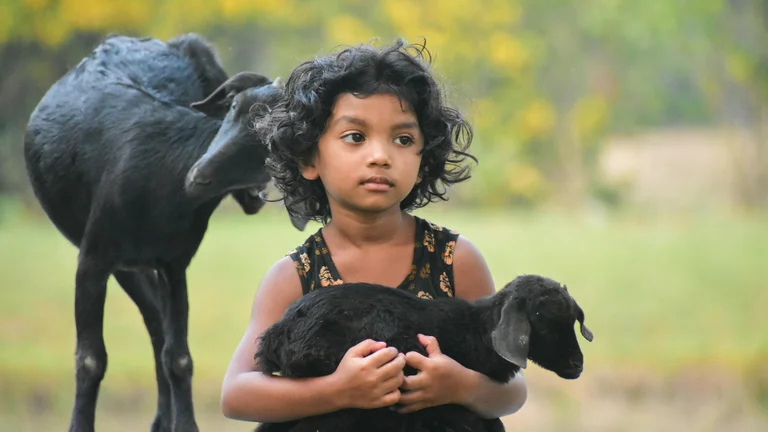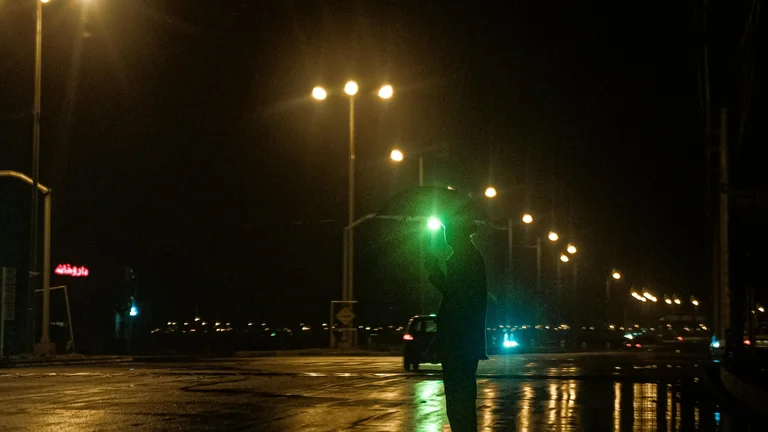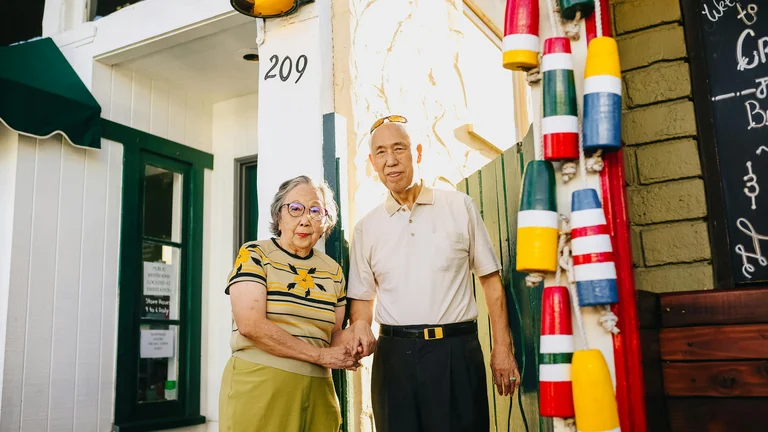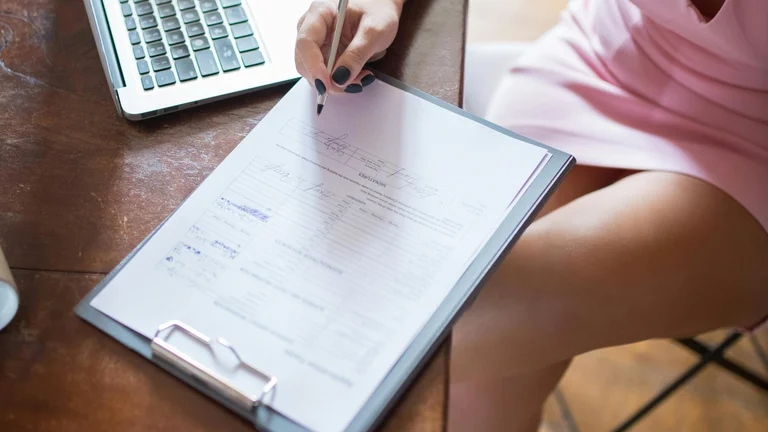Unexpected Love Triangles in Literature: When the Unlikely Wins Our Hearts
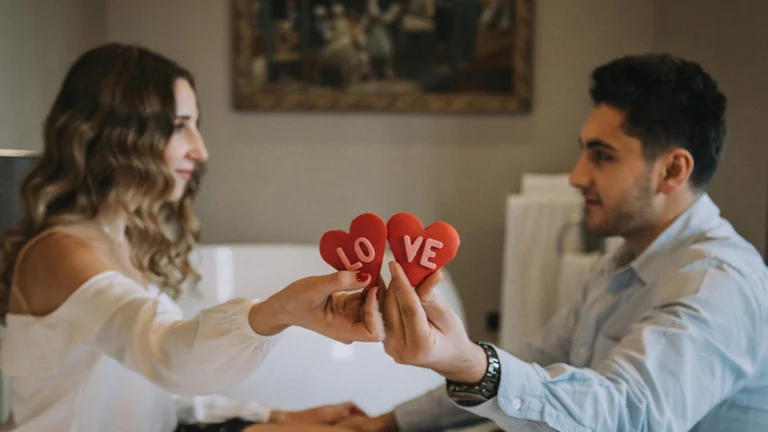
Love triangles have long been a staple in literature, stirring emotions and curiosity about who will win the affection of the person desired. While predictable love triangles tend to follow familiar patterns—such as the classic “two suitors vying for one beloved”—unexpected love triangles subvert these tropes by introducing surprising dynamics, endearing character motives, or humor that makes us smile rather than sigh in frustration. These unconventional love triangles often involve unlikely pairings, evolving friendships, or unanticipated resolutions that reshape our understanding of romance and connection.
One famous example emerges from the world of young adult fiction, where protagonists are frequently caught between two attractive options. However, some stories add a twist by making the third party a friend or even a pet that becomes the emotional crux of the romantic tension. These unexpected gestures refresh the trope and offer new dimensions to relational complexity. This approach allows characters to grow beyond superficial attractions and reveals nuances in how attachment works. Characters whose chemistry is not standard but quirky or mismatched somehow compel readers to root for relationships that do not fit typical molds.
Exploring classic novels, we find cases such as Jane Austen’s "Emma," where intricate social entanglements gently tease readers with mismatched affections before arriving at satisfying conclusions. Although Emma strives to play matchmaker, often misreading feelings, the unexpected love triangles within the story provide comic relief and gentle critiques of societal expectations. Notably, when characters eventually discover their true desires, the triangles collapse or resolve in unexpected ways that emphasize friendship, self-awareness, and respect rather than rivalry or jealousy.
Another literary case is from modern fiction where unexpected familial or platonic ties fracture and reform love triangles. For example, stories where best friends or siblings become caught in romantic rivalries, only to redefine their relationships as alliances rather than competitions. These situations encourage readers to reconsider the borders between friendship and romance. They also highlight that love, in both romantic and non-romantic realms, is fluid and multi-dimensional rather than a zero-sum game.
Unexpected love triangles in literature remind us that love is rarely straightforward. By deviating from traditional formulas, these narratives invite us to embrace complexity and unpredictability. They elevate relationships that foster mutual respect and ordain happiness in forms beyond the conventional romantic ideal. In turn, we find ourselves smiling not because of tension or heartbreak, but at the sheer inventiveness and humanity of love’s many pathways.
Unexpected Love Triangles in Film and Television: Turning Tropes on Their Head
Film and television offer rich terrains for exploring love triangles that both challenge and entertain our expectations. Beyond scripted romantic rivalry, many shows and movies incorporate humor, ambiguity, and transformative character arcs to deliver love triangles that surprise us and, importantly, make us smile. This approach diverges deliberately from the melodrama, opting instead for character-driven resolutions and situational comedy.
Consider the television series “Parks and Recreation,” where a subtle and unconventional love triangle unfolds involving Leslie Knope, Ben Wyatt, and Chris Traeger. Unlike typical love triangles marked by jealousy and conflict, this trio’s interactions center on friendship, mutual respect, and eventual partnerships that sidestep the expected love rivalry. Their dynamics illustrate how strong interpersonal bonds can coexist with romantic interests, emphasizing support rather than sabotage.
In film, the 2000 romantic comedy "High Fidelity" presents a love triangle that breaks from the norm by featuring the protagonist not simply torn between two people but caught in self-reflection and growth. The characters’ relationships only tangentially revolve around romance, with personal insecurities and past mistakes complicating matters. This yields both humorous and heartfelt moments, as the audience appreciates the flawed humanity behind romantic decisions.
A hallmark of unexpected love triangles in visual media is the blending of genres. Comedy, drama, and sometimes fantasy or science fiction merge to produce situations where the attractiveness of all parties is less important than shared experiences, character quirks, or situational irony. For instance, in certain fantasy series, love triangles may involve characters from different species or worlds, offering a playful yet emotionally resonant exploration of diversity in romantic attraction.
Moreover, many contemporary TV shows challenge the heteronormative perspective of traditional love triangles by introducing LGBTQ+ storylines. These narratives often redefine expectations by presenting love triangles that include complex identities and orientations, fostering inclusive storytelling that reflects real-world diversity. The focus here is on authenticity, representation, and the joy that can come from unexpected emotional combinations that defy conventional portrayals.
Real-Life Unexpected Love Triangles That Made Us Smile
While fiction offers imaginative versions of unexpected love triangles, real life is often even more unpredictable. Stories emerging from everyday people reveal that love rarely follows a scripted path. Unexpected love triangles occur in all cultures, ages, and backgrounds, often culminating in unusual, heartwarming outcomes. These authentic experiences inspire empathy and laughter, highlighting the spontaneous and sometimes absurd nature of human connection.
One memorable case circulated in social media involved a workplace love triangle where the supposed third party was a dog shared affectionately between two coworkers. Rather than breeding jealousy or competition, the trio’s bond centered on communal care, humor, and the shared love for their furry companion. This inventive twist turned what could have been tension into camaraderie, showcasing that love triangles need not breed animosity but can foster unusual alliances.
Another real-life example comes from a story where two best friends unknowingly fell for the same person. Instead of rivaling, they confronted the situation with honesty and humor, agreeing to prioritize their friendship above all else. Surprisingly, the person they both liked gently withdrew, suggesting that sometimes the love triangle resolves by collective emotional maturity. This example teaches that unexpected resolutions can be found through open communication and prioritizing human connection over romantic competition.
There are also anecdotal stories about familial love triangles where siblings develop crushes on the same person, leading to funny yet tender situations. These experiences often involve playful teasing, shared family dinners filled with awkward conversations, and ultimately stronger family bonds. The love triangle, while unexpected and initially challenging, becomes part of family lore, retold with laughter and warmth for years to come.
In addition, technology has added new dimensions to how unexpected love triangles form and evolve. Dating apps, online communities, and social media have facilitated encounters that defy traditional boundaries. As a result, love triangles may involve long-distance connections, online personas, and multi-faceted relationships that blend virtual and real-life romance. Such scenarios can be complex but also full of humorous misunderstandings and surprising reconciliations, reminding us that love adapts and finds ways to persist.
Psychological Perspectives on the Appeal of Unexpected Love Triangles
To understand why unexpected love triangles captivate us and make us smile, exploring psychological underpinnings offers valuable insights. Human relationships are intrinsically complex, and love triangles encapsulate many of the cognitive and emotional tensions that define romance. Yet, when these triangles defy expectations or include surprising components, they engage our fascination more deeply.
From a psychological standpoint, love triangles provide a framework for exploring attachment styles, social dynamics, and personal identity. Unexpected triangles, in particular, challenge ingrained schemas about how attraction and commitment should manifest. They invite observers to imagine alternative relationship structures, thereby expanding their relational models. This flexibility can be comforting, especially in advising people that love does not always conform to rigid scripts.
Furthermore, the unpredictability inherent in these triangles can stimulate dopamine release associated with novelty and excitement. This brain chemistry encourages anticipation and curiosity, making stories or real-life occurrences more engaging. When the resolution arrives—often marked by humor, kindness, or surprise relief—it triggers positive emotions that linger, making us smile.
These dynamics also connect to the human preference for storytelling that includes conflict and resolution. Unexpected triangles present conflicts that are not overly hostile or cynical but rather humane and endearing. The humor or warmth found in such situations helps reduce social anxiety around romantic competition, promoting empathy and emotional resilience.
Importantly, unexpected love triangles may validate feelings of ambiguity and complexity common in real relationships. They normalize the coexistence of affection for multiple people and the shifting nature of desires across time. This acknowledgment can reduce guilt or shame associated with romantic indecision, fostering greater self-acceptance and confidence in navigating interpersonal connections.
Breaking Down Different Types of Unexpected Love Triangles
To appreciate the variety within unexpected love triangles, it helps to categorize them based on their defining characteristics. These classifications reveal how diverse the forms of these triangles can be and why some feel fresh or amusing compared to traditional examples.
- The Friendship-First Triangle: In these, the primary bond among any two members is friendship rather than romance. Romantic feelings may complicate but do not destroy the foundation, leading to nuanced resolutions.
- The Comedic Misunderstanding Triangle: These emerge from confusion, mistaken identity, or accidental affection, often used in comedic narratives to produce laughter and goodwill.
- The Unconventional Pairing Triangle: Involving unexpected combinations, such as different ages, cultures, or species (in fantasy/sci-fi contexts), these triangles challenge norms and generate curiosity.
- The Self-Discovery Triangle: Here, the individual at the center undergoes significant personal growth, with the triangle's dynamics serving as catalysts for deeper understanding and better decision-making.
- The Multiple Orientation Triangle: These represent diverse sexual or romantic orientations, breaking traditional heteronormative molds and expanding inclusivity in storytelling.
Each type offers distinctive elements that contribute to why unexpected love triangles charm and entertain us. Recognizing these types also helps creators and audiences approach love triangle narratives with renewed appreciation for innovation and emotional authenticity.
Table: Comparison of Unexpected Love Triangle Types and Their Impact
| Type | Key Characteristics | Common Emotional Tone | Typical Genre | Audience Reaction |
|---|---|---|---|---|
| Friendship-First | Strong base of friendship, romantic tension subtle | Warm, hopeful, respectful | Drama, Romance | Relief, comfort, empathy |
| Comedic Misunderstanding | Humor-driven confusion or mishaps | Lighthearted, playful | Comedy | Amusement, laughter, delight |
| Unconventional Pairing | Unexpected demographics or identities | Curious, intrigued | Fantasy, Sci-fi, Romance | Surprise, interest, acceptance |
| Self-Discovery | Central character’s growth focus | Reflective, inspiring | Drama, Coming-of-age | Inspiration, connection |
| Multiple Orientation | Diverse sexual/romantic identities | Authentic, affirming | Contemporary Romance, Drama | Appreciation, inclusiveness |
Practical Examples for Creators: How to Craft Unexpected Love Triangles That Engage
Writers, filmmakers, and content creators seeking to develop love triangles that resonate positively with audiences can benefit from practical guidelines grounded in the analysis of successful cases. Crafting unexpected love triangles demands intentionality around character depth, relational dynamics, and plot twists that honor authenticity and emotional complexity.
First, focus on multidimensional characters. Characters should have clear motives, backgrounds, and vulnerabilities that justify their participation in the triangle. Avoid caricatures or stereotypes that reduce individuals to mere romantic rivals. Instead, give each character unique traits that foster empathy and investment from the audience.
Second, prioritize relationships that evolve beyond competition. Incorporate moments where characters support each other despite overlapping romantic interests. Showcase friendship, compromise, and respect as vital components of the triangle, subverting the typical narrative of betrayal or bitterness.
A third key aspect is pacing. Introduce tension and ambiguity gradually, allowing the audience to savor the unfolding emotional intricacies rather than rush to an expected climax. Use miscommunications, revelations, and shared experiences to deepen the triangle’s appeal.
Fourth, consider the role of humor and lightheartedness. Injecting comedic elements or playful irony can engage viewers or readers, soften potential discomfort with romantic complications, and ultimately leave audiences with fond memories rather than frustration. Humor can humanize characters and situational awkwardness.
Last, think inclusively and diversely. Reflect contemporary realities by representing different ethnicities, sexual orientations, and social contexts. Diverse love triangles have greater potential to surprise and educate, broadening emotional resonance while celebrating varied experiences.
Key Steps to Building Engaging Unexpected Love Triangles
- Develop fully realized characters with clear emotional arcs.
- Frame relationships beyond simple rivalry, emphasizing empathy.
- Introduce tension and suspense with careful narrative rhythm.
- Use humor strategically to alleviate drama and enhance likability.
- Embed social and cultural diversity to reflect authentic experiences.
Case Study: Unexpected Love Triangle in the TV Series "Crazy Ex-Girlfriend"
The musical comedy-drama "Crazy Ex-Girlfriend" exemplifies an unexpected love triangle executed with verve and emotional insight. The protagonist, Rebecca Bunch, finds herself caught between Greg Serrano, her impulsive love interest, and Nathaniel Plimpton III, a more stable romantic option. Instead of a typical dichotomy where one must choose quickly, the show explores Rebecca’s complex feelings, insecurities, and evolving sense of self, blending humor, mental health themes, and musical numbers.
The series defies the trope by focusing on Rebecca’s own journey rather than presenting the male characters purely as prizes. The love triangle fluctuates, with moments of tension, reconciliation, and self-awareness. Viewers are treated to fresh perspectives on romance and desire, appreciating the imperfect but sincere connections that form and dissolve. The unexpected elements stem from character development and subversion of expectations rather than contrived drama, creating a love triangle that made many smile while reflecting modern relationship challenges.
Such case studies serve as templates for creators aiming to deliver romance narratives that engage emotionally without exhausting timeworn clichés. They show how triangular relationships can be platforms for nuanced storytelling that respects audience intelligence and emotional depth.
List: Common Emotional Effects of Unexpected Love Triangles
- Surprise and curiosity from subverted tropes
- Joy and laughter through humorous twists
- Empathy for multidimensional characters
- Relief from tension via respectful resolutions
- Reflection on the complexity of love
- Validation of non-traditional relationships
- Inspiration from personal growth journeys
How Unexpected Love Triangles Influence Cultural Narratives
The pervasiveness of love triangles in storytelling reflects broader cultural narratives about love, identity, and social connections. When these triangles are unexpected—when they challenge norms and comfort zones—they contribute to evolving dialogues about what relationships can be. This influence is significant as media shapes public perceptions and, in turn, personal experiences of romance.
By highlighting respectful resolutions, friendship emphasis, and inclusive representations, unexpected love triangles promote healthier ideals of connection. They discourage toxic rivalry and shame while encouraging communication and openness. As cultural touchstones, these narratives help dismantle limiting beliefs and celebrate complexity.
Moreover, unexpected love triangles encourage audiences to question binary choices prevalent in many social systems. They model that love need not be possessive or zero-sum and that emotional landscapes can be richer and more forgiving. The ripple effect of such portrayals may contribute positively to social attitudes toward romantic diversity and flexibility.
Academics studying media influence note that integrating fresh takes on traditional tropes aligns with contemporary shifts toward recognizing fluidity in relationships, gender identity, and emotional expression. Therefore, love triangles that make us smile are not merely entertainment but also acts of cultural progression, signaling nuanced understandings of human connection.
The impact also extends to fan engagement, encouraging communities to celebrate creativity and representation. Unexpected love triangles often spark discussions, fan art, and reinterpretations that further deepen engagement and emotional investment, creating shared cultural moments that endure.
Conclusion Without Conclusion: The Ongoing Allure of Unexpected Love Triangles
The exploration of unexpected love triangles reveals their capacity to transform a familiar trope into a source of warmth, humor, and meaningful reflection. Through literature, film, real-life anecdotes, psychological insight, and cultural impact analysis, it becomes clear that these triangles resonate because they capture human complexity honestly and creatively.
Each unexpected love triangle offers a unique story—sometimes funny, sometimes touching, always engaging—that ultimately affirms the unpredictable nature of love. They remind us that connection is rarely linear or simple, and that joy can emerge from the most unlikely entanglements.
By opening space for diverse, respectful, and imaginative portrayals, unexpected love triangles enrich narratives and make us smile not at superficial romance but at the enduring, messy, and beautiful truths of human relationships.
FAQ - Unexpected Love Triangles That Made Us Smile
What makes a love triangle 'unexpected'?
An unexpected love triangle deviates from traditional romantic rivalry by incorporating surprising dynamics such as friendship, humor, diverse identities, or unconventional resolutions that focus on respect and mutual support rather than jealousy or conflict.
Why do unexpected love triangles often make us smile?
They evoke positive emotions because they highlight warmth, empathy, humor, and respectful relationships, subverting typical tense or dramatic portrayals and reminding us of the joyful complexity of human connections.
Can real-life love triangles be positive or humorous?
Yes, real-life unexpected love triangles sometimes lead to camaraderie, shared experiences, and personal growth, often inspiring laughter and stronger bonds rather than rivalry or heartbreak.
How do unexpected love triangles differ in media genres?
They appear across genres—from comedy and drama to fantasy and sci-fi—and often blend elements like humor, character growth, or inclusivity to reshape the traditional love triangle trope for fresh audience engagement.
Do unexpected love triangles include LGBTQ+ representations?
Yes, many contemporary stories feature love triangles involving diverse sexual orientations and identities, expanding inclusiveness and reflecting real-world relationship diversity.
What can creators learn from unexpected love triangles?
Creators can craft compelling narratives by focusing on full character development, respectful relationship dynamics, varied pacing, humor, and inclusivity, moving away from clichéd rivalry toward richer emotional storytelling.
Unexpected love triangles charm us by subverting traditional romance tropes, highlighting empathy, humor, and complex relationships. Whether in fiction or real life, they reveal love’s unpredictable nature and inspire smiles through respectful, inclusive, and heartwarming dynamics.
Unexpected love triangles offer a refreshing twist on a classic romantic trope, emphasizing warmth, humor, and emotional complexity over rivalry. These narratives—across literature, film, and real life—remind us of love’s unpredictability and the joyful possibilities within human connection. Their enduring appeal lies in portraying relationships that transcend convention and make us smile through genuine, relatable emotions.

